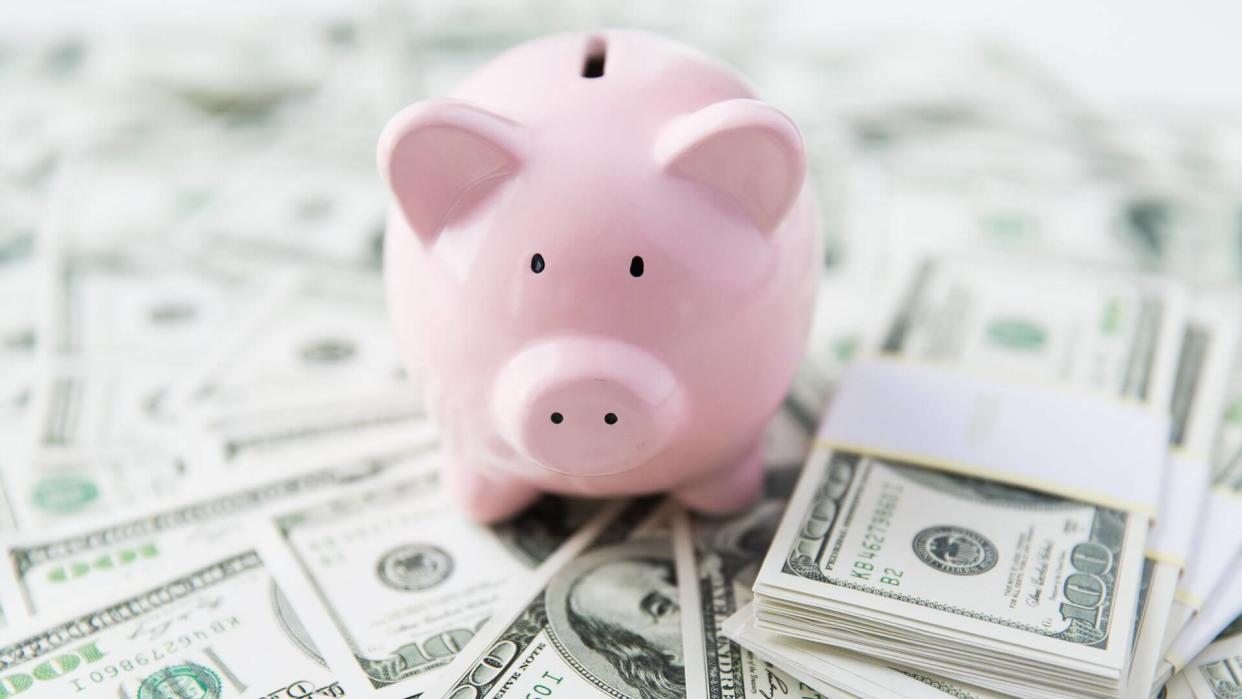Expert Advice: With Rates So High, Is a High-Yield Savings Account a Better Bet Than the Stock Market?

The federal funds rate, the figure that determines interest rates in the United States, increased to 4.33% on Dec. 15, 2022. That rate is the highest rate since 2007 when the federal funds rate topped 5% amid the Great Recession.
Explore: GOBankingRates’ Best Banks of 2023
See: Here’s How Much Americans Have in Their Savings Accounts in 2023
Find Out: How To Calculate the Exact Minimum Amount You Should Have in Your Checking Account
A high federal funds rate can help curb inflation, as it increases the cost of borrowing. This usually leads to banks increasing interest rates on savings, which has been the case in the current climate. With savings interest rates topping 3% and even 4% in some cases, you might wonder if it’s better to put all your money in savings and ignore the stock market.
That urge makes sense in the current economic environment. After all, the S&P 500 declined by more than 19% in 2022, causing many people to become bearish about the stock market. But most experts agree it’s not as simple as choosing savings or choosing stocks.
As we will see, it’s still important to consider your personal goals and risk tolerance. Savings account interest rates and recent stock market returns might influence your decision, but you should also think about your financial situation. Let’s examine the options more thoroughly here.
Benefits of Stashing Money in Savings
The biggest benefit of tucking your money away in a savings account is simple: safety. These accounts are generally FDIC-insured, meaning up to $250,000 is guaranteed per depositor per account. Add a high yield to the mix, and it’s easy to see the allure of these accounts, especially with yields upwards of 4% on some accounts.
“The biggest advantage of a high-yield savings account is that the money you put into it is virtually guaranteed to come back out, plus interest,” said Ben Waterman, co-founder and COO at Strabo, an investment portfolio tracking app. As Waterman noted, negative stock market returns don’t cause a drop in savings account rates. They keep paying you month after month, even if the stock market is tanking.
This also means high-yield savings accounts are ideal for short-term savings. You know your money is safe and will be there when you need it. “With the recent inversion of the yield curve, it is also now probably more sensible to keep your money in shorter term savings accounts which are actually providing better returns,” Waterman said.
Take Our Poll: How Big of a Sign-Up Bonus Would It Take for You To Change Banks?
Benefits of Investing in Stocks
Investing in stocks can be a good idea, especially if you can wait at least five years for the market to turn around. Although savings account rates are quite high right now, they are only around half the most recent inflation figure of 6.5%. While that number has been falling, lower inflation will eventually mean lower interest rates on savings. In other words, savings accounts will never quite keep up with inflation.
“On the other hand, investing in the stock market has the potential to yield higher returns than a high-yield savings account,” Waterman said.
However, as mentioned earlier, the S&P 500 declined by 19% in 2022, so investing in stocks requires a long-time horizon. Stocks can help you beat inflation, but they won’t likely do so reliably unless your time horizon runs many years into the future.
If you don’t need your money right away, though, the stock market has the potential to outperform savings accounts. “Depending on where you invest and how much risk you are willing to take, you could potentially make more money in the stock market than you would with a high-yield savings account,” Waterman said. “Additionally, investments in the stock market often provide tax advantages that are not available with a high-yield savings account.”
Stock Market vs. Savings: Which is Better?
We often find ourselves wanting a simple solution to our problems and dilemmas, but this question doesn’t have a simple answer. As is often the case with financial questions, the best answer is: it depends. Your unique situation will determine what makes sense for you.
“While such high-yield accounts seem particularly attractive in relation to a more volatile stock market, investors should take the balanced view that both stocks and high-yield cash savings are likely to have an important place in their overall financial plan,” said Ryan Burke, GM at M1 Finance.
Burke added that investors usually can’t time the market. “While such high-yield accounts seem particularly attractive in relation to a more volatile stock market, investors should take the balanced view that both stocks and high-yield cash savings are likely to have an important place in their overall financial plan,” Burke said.
Investing isn’t black and white. You can always invest in stocks and also tuck money into a high-yield savings account. The question then becomes how much money to put into each — along with determining your investing strategy. While that is another topic entirely, it’s one that is worth putting to a trustworthy financial advisor.
More From GOBankingRates
This article originally appeared on GOBankingRates.com: Expert Advice: With Rates So High, Is a High-Yield Savings Account a Better Bet Than the Stock Market?
